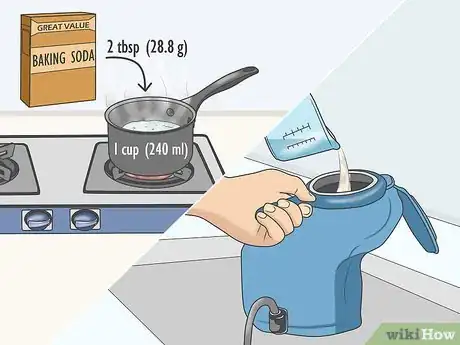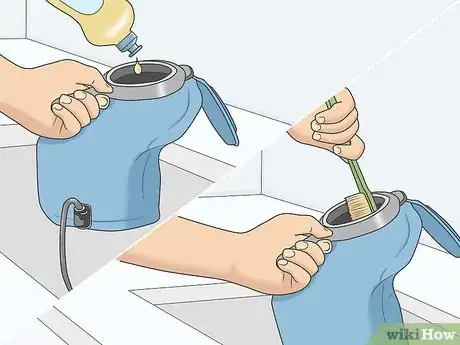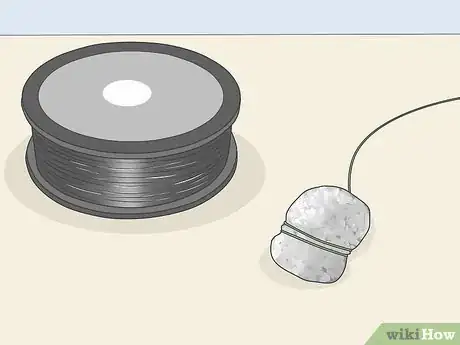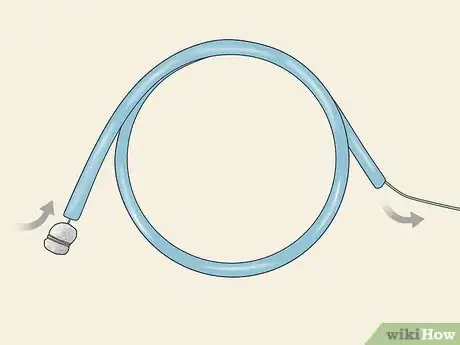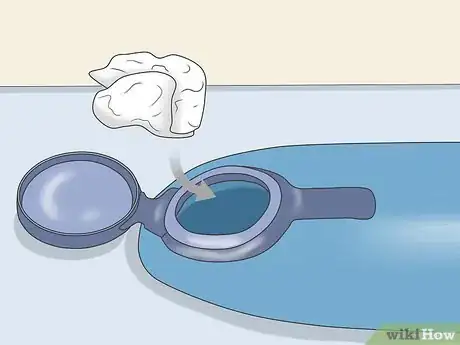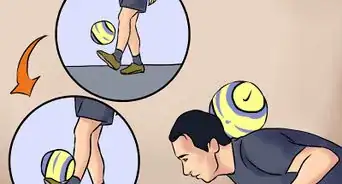This article was co-authored by wikiHow staff writer, Janice Tieperman. Janice is a professional and creative writer who has worked at wikiHow since 2019. With both a B.A. and M.A. in English from East Stroudsburg University, she has a passion for writing a wide variety of content for anyone and everyone. In her free time, you can find her working on a new crochet pattern, listening to true crime podcasts, or tackling a new creative writing project.
This article has been viewed 22,941 times.
Learn more...
Camelbak water reservoirs, more commonly known as water bladders, are a popular way to stay hydrated on-the-go. In order to keep your water bladder as hygienic as possible, it’s important to clean and dry it to prevent any mold growth. If you don’t need to use your Camelbak bladder right away, try letting it air-dry for a day or 2. If you need to use it more immediately, consider speeding up the air-drying process with paper towels.
Steps
Air-Drying the Bottle
-
1Wash out the bottle to sanitize it. Clean the bladder with a mixture of 2 tbsp (28.8 g) of baking soda and at least 1 cup (240 mL) of hot water. Pinch the end of the drinking tube closed and hold the bottle over your head to swish the mixture throughout the tube and bladder. Let the baking soda mixture sit for half an hour before pouring it out.[1]
- If you’d prefer a stronger cleaning solution, use 2 tablespoons (30 mL) of bleach instead.
-
2Scrub the bottle with a gentle dish soap. Use a pea-sized amount of soap to wash out the cleaning solution, and continue to rinse out the bladder with warm water. After rinsing, scrub the hard-to-reach corners of the Camelbak bladder with a brush. Finally, check that all of the suds are gone before you leave the bladder to dry.[2]
Did you know? Camelbak also manufactures brushes designed to clean their water bladders.
Advertisement -
3Set the Camelbak bladder on a flat, open surface to let it dry. Leave the top of the water bladder ajar so that open air can get into both the bottle and the drinking tube. Let it dry for a day or 2, or until all moisture has evaporated from inside of the bladder. To check this, rub the inside of Camelbak with a clean finger to see if the bladder still feels damp.[3]
Using a Paper Towel
-
1Tie a wad of cotton to a line of fishing wire. Knot a piece of fishing line around a cotton ball, or a piece of cotton ball. Check that the cotton is securely attached to the fishing line, and tie it multiple times, if necessary. If you don’t have any cotton balls on hand, cut off the end of a Q-tip and use that instead.
- Pipe cleaners are also a great way to get rid of any excess moisture in the drinking tube.
-
2Drag the line through the drinking tube to dry it out. Stick the cotton end of the fishing wire into the tube and push it through. Continue pushing the wire so that the cotton ball or bud picks up any obvious moisture. Keep forcing the wire through the tube until the cotton emerges on the other end.
- Cut the cotton ball or bud into a smaller piece if it doesn’t seem to fit through the drinking tube.
-
3Shake out the water bladder to remove any left over water. Hold the main part of your Camelbak over the sink to get rid of any stray water droplets.[4] If there’s still some water leftover in the bladder, use a paper towel to blot it away.
-
4Crumple up some paper towels and leave them in the water bladder. Ball up a few sheets of paper towels and layer them in the bottle. Continue stuffing the bladder until it’s full, making sure that the paper towels are touching the edge of the bottle as you go.[5]
- If you’re having difficulty getting the paper towels into the bottle with your hands, try using a set of salad tongs to place them in the bladder.
-
5Let the Camelbak air-dry for at least 4 hours. Set the water bladder on a flat, open surface where it can receive plenty of air. Check to make sure that the water tube as well as the main bladder are both open as they dry. If needed, let your Camelbak bladder dry overnight.[6]
Tip: Try leaving your Camelbak bladder in a place you won’t forget about it, like the top of a refrigerator.
References
- ↑ https://www.camelbak.com/en/customer-service/help-center/care-cleaning/product-cleaning/how-to-clean-reservoir
- ↑ https://www.camelbak.com/en/customer-service/help-center/care-cleaning/product-cleaning/how-to-clean-reservoir
- ↑ https://www.camelbak.com/en/customer-service/help-center/care-cleaning/product-cleaning/how-to-clean-reservoir
- ↑ https://m.youtube.com/watch?v=A6zODZj5cHA&t=0m43s
- ↑ https://m.youtube.com/watch?v=A6zODZj5cHA&t=1m24s
- ↑ https://youtu.be/A6zODZj5cHA
